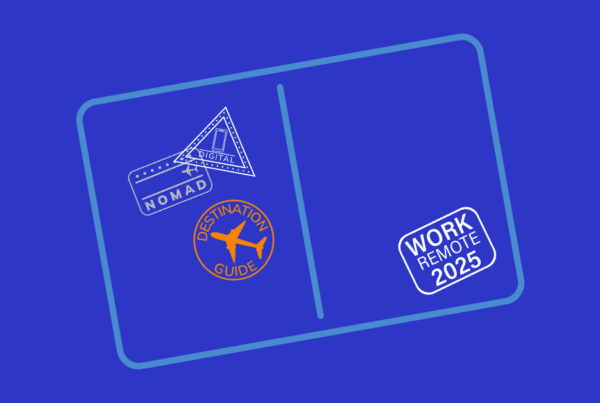
In a typical office environment, there is at least one dreaded job responsibility. At least for most workers.
Even for workers that love the company mission and overall responsibilities, there are still barriers that keep them from using their full potential – like being partially engaged, which many United States workers are currently struggling with at their current jobs.
This past summer, Gallup found only 36 percent of employees are engaged in their work. And disengagement is rising – 14 percent to 15 percent in 2020 and 2021, respectively. According to the report: “The ratio of engaged to actively disengaged workers in the U.S. is 2.4-to-1, down slightly from 2020 when the ratio was 2.6-to-1.”
Those numbers become even more staggering when you segment the data by generation. Millennials currently represent the largest generation in the workforce, as well as the most disengaged generation in the workforce. In Gallup’s report on millennials, it found 55 percent are not engaged in their jobs, while 16 percent are actively disengaged.
This is bad news for an already-suffering workforce, as we are now fully immersed in The Great Resignation, a term coined by Texas A&M’s Anthony Klotz. We heard whispers of this term right around the time COVID-19 vaccines were widely available and people were becoming more confident in their situations.
“When there’s uncertainty, people tend to stay put, so there are pent-up resignations that didn’t happen over the past year,” Klotz told Bloomberg in May.
Fast forward a few months and the workers are telling their employers what they want. Economists are saying that workers in lower-paying positions and fields are being lured by higher-paying opportunities or a working situation that fits their lives better. Add in an increase in early retirees, and you get today’s workforce – one that is down 4.3 million workers.
This trend is not much different from what’s happening in the rest of the world, as people are realizing fractional work – or gig/freelance work – gives them the opportunity to create an environment where there is full autonomy and no dreaded job responsibilities.
Life is too short to do what you hate
Millennials are tired. Now reaching middle age, they’ve spent the past decade being blamed for nearly any modern problem. That’s not hyperbole, either. Type in “millennials killed” into any search engine and nearly every major business publication has its own take on these bloodthirsty anarchists.
Except that’s not it. Not at all.
Like any generation, millennials are just trying to get through life. And with many millennials entering the workforce during the 2008 Great Recession, getting through life has meant working overtime, picking up side hustles, and constantly being reminded about their bleak retirement outlook.
For a hot second, “hustle culture” became synonymous with the millennial worker. Coming out of the 2008 recession, there was the sentiment that if you “hustled hard enough,” anything was within reach. Millennials bought it – and quickly realized the lie.
“The vast majority of people beating the drums of hustle-mania are not the people doing the actual work. They’re the managers, financiers, and owners,” Basecamp Co-founder David Heinemeier Hansson told The New York Times.
After trying every possible way to earn income at least semi-comparable to their boomer counterparts, millennials are recognizing the workforce is rigged against their best interests. So, with nothing to lose, millennials are currently saying “Fuck it” and doing things their way. (And they’re bringing Gen Z within them.)
Flexible work is easier than ever
Data is consistently proving workers want it their way, which makes sense since millennials and Gen Z make up the majority of the workforce.
A recent FlexTal survey found there is currently a significant worker desire to pursue a full-time freelance career. If dependable, freelance income was guaranteed, 40 percent of respondents said they would leave their full-time job to go freelance.
Upwork saw similar results when it released its report, “The Great Resignation: From Full-Time to Freelance.” It found that 10 million Americans are currently considering freelancing.
Why?
Apparently, they got a taste of remote life and refused to go back, with 73 percent of those workers citing the ability to work remote or flexibly as a reason.
In fact, a chunk of workers are looking to go freelance solely to cash in on the remote perks the lifestyle brings. In the same Upwork report, “…18 [percent of respondents] said they would consider freelancing or self-employment to continue to work remotely, and another 26 [percent of those polled] said they might consider it.”
And as the workforce is learning to live with COVID variants, workers have a concrete idea of what they want out of a job. As experts are rushing to study this new phenomenon through reports and surveys, it’s clear workers want flexibility and autonomy.
The FlexTal survey reflects those feelings, with 45 percent of respondents feeling underutilized in their current role. When asked “Are you currently or have you recently considered leaving your present job,” those numbers are similar, with 40 percent of respondents saying “yes,” echoing current workforce trends.
The truth is this: our workers are unhappy and the traditional workforce is contributing to that unhappiness.
Work on what you love, get rid of the rest
Every person is capable of learning a specialized skill – and that’s how millennials and Gen Z workers are giving themselves a competitive edge in this flip-flopped workforce. Gen Z – keenly aware of the financial crisis and student-loan debt millennials are enduring – are increasingly skeptical of higher education. This past spring, enrollment rates dropped 3.5 percent – seven times worse than the previous year’s rates.
The most digitally literate generation in the workforce, Gen Z is now looking to non-traditional ways to develop their skills for the job market. Trade schools, apprenticeships, and entrepreneurial endeavors are the new ways Gen Z is taking control of their careers. They are also partial toward independent, hands-on learning, which specialized skills offer.
Those attitudes were accelerated within the past year and a half due to COVID-19, with both workers and businesses turning to skilled work. Global layoffs were happening at historic rates and those that had the misfortune of being part of mass layoffs had to get creative to keep things afloat. So, people took inventory of what they do best and started looking for whatever work they could find.
Meanwhile, businesses – no longer able to afford full-time workers and benefits packages – had to make layoffs. Work still needed to get done, so business leaders turned to skilled, flexible workers to fill the gaps. They now could get the same quality – or even better quality – deliverables at part-time pricing.
The result of this symbiotic relationship has been an explosion of opportunities within skill-specific industries like tech. People who thought they could never take the leap into freelancing were finding out that leap is not as big as they initially thought.
And as freelancers grow their projects and their relationships become longstanding, they are offered a unique freedom traditional workers don’t get – the opportunity to only select the projects they want to work on.
No more dreaded job responsibility poisoning a worker’s day-to-day, just work that is the best fit.
Lindsay Patton is a self-employed writer and social media strategist. A leader for most of her career, Lindsay has managed more than 250 direct employees and loves mentoring young talent to help grow their skills. She spent seven years as a reporter and editor and is still an active writer and journalist. In 2016, Lindsay started taking social media seriously and the skill quickly became one of her specialties. Within the past two years, Lindsay has been invited to speak on social media and leadership in the workplace by Ernst & Young, Social Media Day PHL, The W.E.L.L. Summit, and more. She has found happiness in the self-employed life because it allows her the flexibility to spend quality time with her husband and their two goofball dogs.




